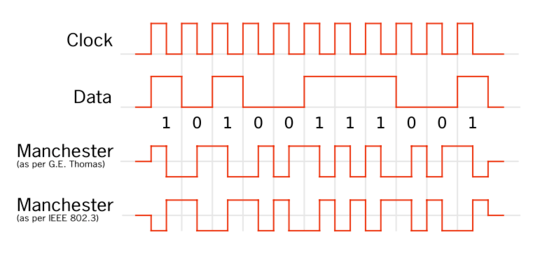11
4
When you want to transfer data from one computer to another, your data (in binary form) will first go to the NIC (Network Interface Card) where the data will be encoded (with timer clock tick for example) and sent over the network under an electronic signal.
An example of Manchester Encoding:
101110011001 // data
101010101010 // timer tick on network
000100110011 // result using XOR
Why doesn't the NIC directly transfer the binary data but must encode it first?

No, I don't ask advantage of Machester Encoding, I just want to know why need encoding ? – hqt – 2012-08-05T11:44:11.760
2Like I said, because when you do not encode them, you need to synchronize the clock separately, which means you will have a higher error rate and lower transmission. – Lucas Kauffman – 2012-08-05T11:46:34.607
But I think, if you encode (Machester encoding or another encoding, too), two clock still must work at same frequently, or it will decode wrong. – hqt – 2012-08-05T11:55:59.123
No it doesn't because the clock is part of the way it's encoded, as you see you do not go up and down to the baseline, instead the baseline is there to tell you when nothing is being sent. So a separate clock is not necessary anymore – Lucas Kauffman – 2012-08-05T12:53:38.153
3Additional reason: prevents long runs of 0s or 1s, so errors (eg.: disconnections) will be more evident. – tucuxi – 2012-08-05T13:28:23.100
@hqt - Circular questioning. The advantages Manchester Encoding (self clocking, error correction and detection) delivers is why it is needed and used instead of a straight binary transmission. See @ sawdust's answer. There is simplicity in complexity in this case. – Fiasco Labs – 2012-08-06T01:37:22.887
@hqt: Same frequency. Different phase. – Ignacio Vazquez-Abrams – 2012-08-06T02:46:53.253